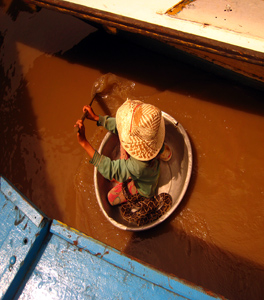This opportunity to come to Cambodia was one of the greatest and most valuable decisions I have ever made. While in Cambodia, I absorbed everything around me. I was able to learn common customs from the people around me and I learned a lot about myself as a person. Although I did extensive research for this trip, what taught me most was the experience. Being in Cambodia with high language barriers, different foods and prices and truly amazing people was altogether an experience like no other. Because of this trip I have more of a sense of third-world countries and I also have a growing appreciation for different cultures and lifestyles.
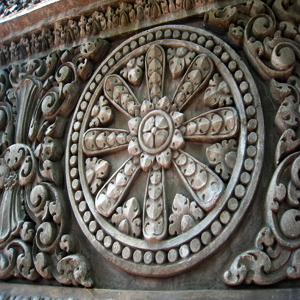
The eight spoke wheel is a symbol that has represented Dharma, the Buddha’s teaching of the path to enlightenment, since the early period of Indian Buddhism.
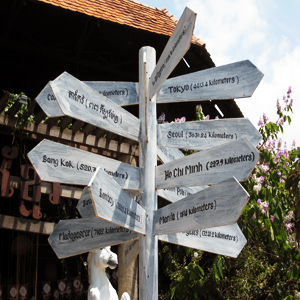
Cambodia is a country located in the southern portion of the Indochina Peninsula in Southeast Asia. With a total landmass of 69,898 sq mi iit is bordered by Thailand to the northwest, Laos to the northeast, Vietnam to the east, and the Gulf of Thailand to the south.
When seeing a place alone and with your own eyes it can take an entirely new perspective. When I would go out into the city alone, whether it was to pick up some food or to go to an atm or to sit at a café, I was able to see Cambodia through a different lens. I was also able to place myself away from the hustle and bustle of tourist areas so other tourists or English speakers would not surround me. I believe exploring a foreign country through these means is best in order to gain more of a meaningful experience.
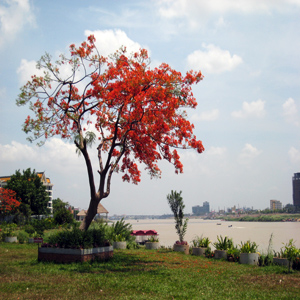
Cambodia is well known for its stunning vegetation and wildlife. These red-blossomed trees line the Mekong river with their beauty.
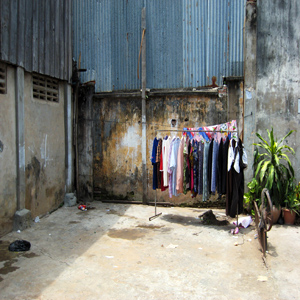
The poverty in Cambodia is overwhelming in both size and numbers. However, as a tourist, one is mainly immersed in the great dining and cheap bars that line tourist areas. The people of Cambodia live off of tourism and the crops they grow. This image is of a Cambodian’s laundry hung next to their house only a block away from a popular tourist restaurant.
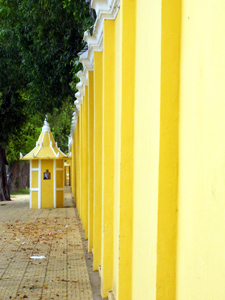
The palace was constructed after King Norodom relocated the royal capital from Oudong to Phnom Penh in the mid-19th century. It was gradually built atop an old citadel called Banteay Kev. It faces towards the East and is situated at the Western bank of the cross division of the Tonle Sap River and the Mekong River called Chaktomuk.
The royal palace in Phnom Penh, Cambodia is a complex set of buildings which are the royal residencies of the king of Cambodia. Norodom Sihamoni is the king today. It has been occupied by the kings since the 1860s when it was built.
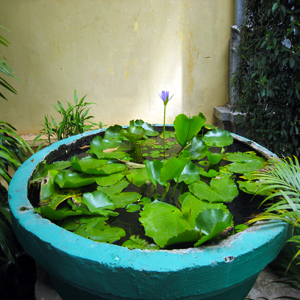
Lotus flowers grow in muddy waters and feature a pristine bloom above the surface. This unique growth pattern elevates the lotus to a symbol linked to spirituality in the Buddhist, Egyptian and Thai traditions.
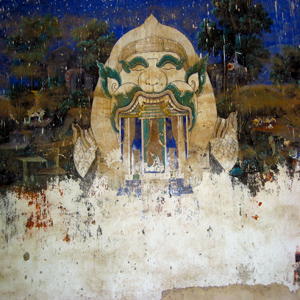
The Ramayana is an ancient Sanscrit epic that consists of seven books. It is an important influence in the Buddhist religion and especially I Indian life and culture.
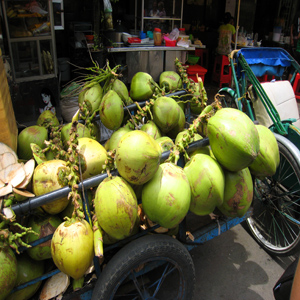
Coconuts, among a variety of other fruits are a constant in Cambodian market places. They are grown locally, so you can count on fruit being fresh.
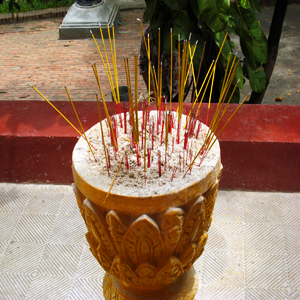
Incense is a common sight around and within temples. They act as a soothing agent for those who are meditating or walking around the Buddha figurines.
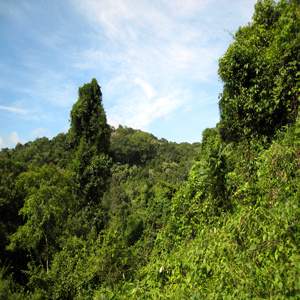
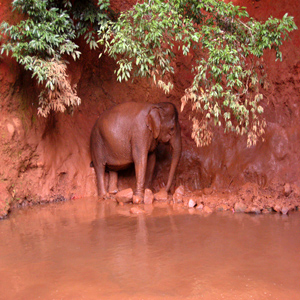
The elephant sanctuary that I visited is placed deep within the jungles of Cambodia. The views are a spectacular shade of green and the sounds of the wildlife are numerous. From howler monkeys to grasshoppers, the jungle is full of life and beauty.
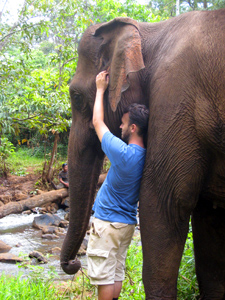
Onion was one of four elephants placed in an area known as “Heaven” just a few miles from the elephant project center. Where she stands is a favorite muddy are where they have scraped most of the mud from the wall off with their trunks. They then bath in the mud and then cool off in the water. It is no wonder they have named it “heaven.”

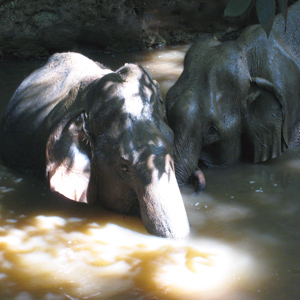
This trip was offered through my University. I and eleven other students, along with our professor, hoped to explore the events and challenges that shape Cambodia today. This country is still in the process of negotiating recovery from its nearly total destruction only 30 years ago. Throughout our trip, we were asked questions such as: What does it take to rebuild a country, to restore its traditions and move forward in the modern world economy after such a tragedy? What are the ethical dilemmas faced in the remaking of a nation?
In addition to a revival in tourism, the extreme human need evident in Cambodia today attracts thousands of volunteers. Through our service, we helped to make a difference and helped to spread our knowledge of the poverty, yet, growing strength, of this beautiful country.
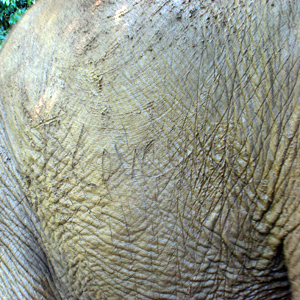
Here, one of the Mahout natives that helps take care of the elephants, has written “I love you” on the side of one of them in mud.
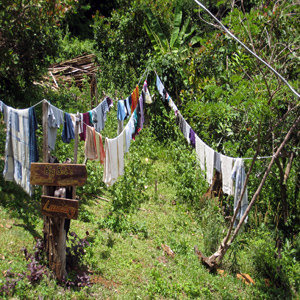
While staying at the elephant project our laundry is washed and then placed on a line above our sleeping cabins.
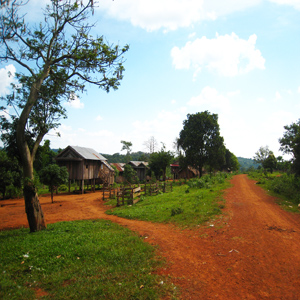
We were given a special tour of the village nearby that consists of dirt roads and straw huts. It is not a busy time of day and so we are only able tto see a few of the houses from the inside.
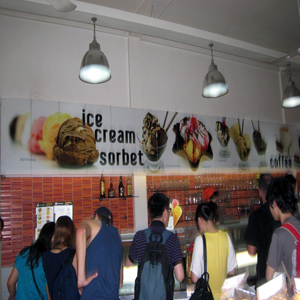
One of the delicacies of Siem Reap is Pub Street. Known for many tourists, the area of Pub Street is lined with shops and restaurants. Among these is a great restaurant called The Blue Pumpkin. We mainly went there for their delicious ice cream but then their coffees and even their dinners appealed to us. The city of Siem Reap has much to offer.
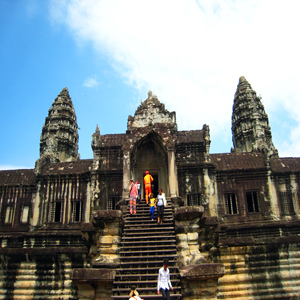
Angkor Wat is the largest Hindu complex in the world and was built in the early 12th century. With all its splendor and beauty, the walls and corridors of the temple have so much to offer. To walk around the grounds and to climb the steps of the towers clears ones mind. There are also numerous bass reliefs of the Ramayana battles along the temple walls. If you are planning on visiting Cambodia, this is a temple you don’t want to miss.
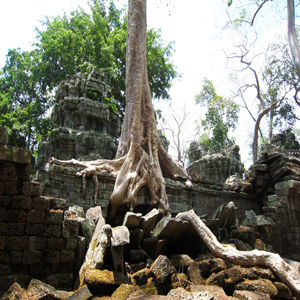
Angkor Wat Ta Prohm is the famous temple where the Tomb Raider was filmed starring Angelina Jolie. Despite its fame from the film, the temple itself is a masterpiece. Although in ruin, tree roots and vines wrap around the broken stone and bass reliefs can be found all over the walls.
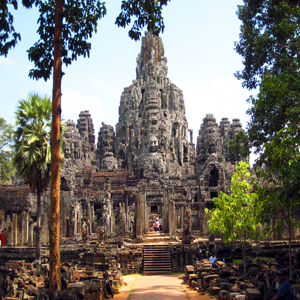
Similar to Ta Prohm, it is easy to lose oneself in the maze of corridors in Angkor Thom.
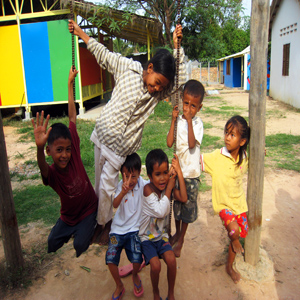
While in Siem Reap, I had the opportunity to work with students at a school for levels one through five. Levels are based on knowledge and so most classes hold a variety of age groups. We taught them English and they taught me as much Khmer as I could pronounce. These students were so grateful for everything they had and they saw me as a pool of knowledge that they wanted to be a part of too. I taught them inside and outside the class. When we played soccer with them they wanted to learn about sports in America. And when we ate lunch with them, hey wanted to know what I would have eaten at home. I believe these students taught me more than I could have imagined and I am a better person for it.
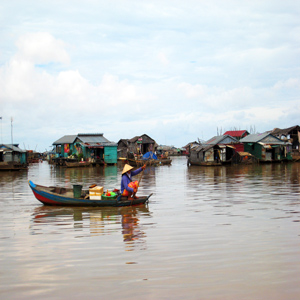
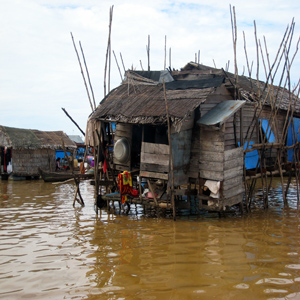
Lastly, some from our group decided to visit the Floating Village as our last tourist destination. We traveled to the village by boat and then hopped between stores, homes and markets. The people living in this unique village live solely off of what they produce. Most of the money comes from fishing. They also have a couple of schools that provide free food for the students. It was a memorable experience.
